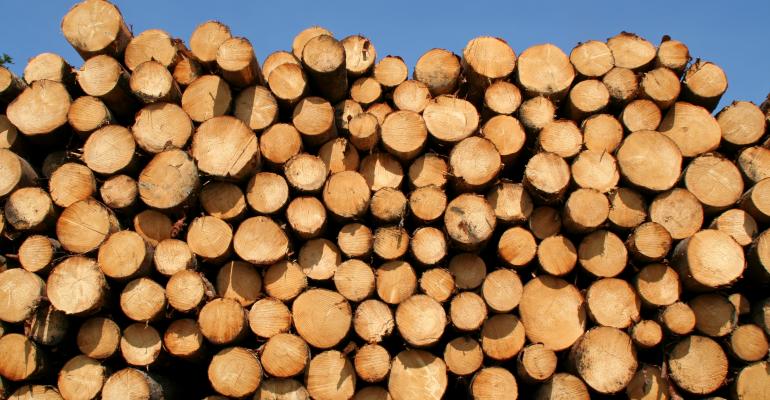Apartment developers continue to be stressed by the unpredictable cost of construction materials.
Overall, materials prices keep rising faster than inflation. But what’s worse is that prices for individual construction materials are unpredictable from month to month. The price of lumber and diesel fuel has fallen sharply, for now. But new policies from the U.S. government continue to jolt the markets, from possible sanctions on oil producing countries like Venezuela to government tariffs on imported steel.
Developers and contractors are struggling to adapt. “It’s likely that contractors will try to protect themselves from unexpected price jumps by putting contingencies into their bids or asking owners to share price risks,” says Ken Simonson, chief economist for the Associated General Contractors of America.
“The outlook remains uncertain, with oil prices and tariffs especially in flux,” he adds.
At press time, there was still a risk that President Donald Trump would increase tariffs on thousands of Chinese goods to 25 percent from the current 10 percent, according to Simonson. Or the U.S. might continue to defer the increase or even roll back the current tariffs on other Chinese goods. The outlook on other tariffs was also uncertain.
“President Trump could unilaterally change the 25 percent tariff on steel and the 10 percent tariff on aluminum in either direction at any time,” says Simonson.
Changing U.S. policy is making it difficult for developers to plan. The most significant problem that housing developers of all kinds faced in 2018 was “building materials prices" according to a survey from the National Association of Home Builders (NAHB). The vast majority of developers (87 percent) said the cost of materials was a significant problem for them in 2018 and 69 percent anticipate more trouble from material costs in 2019.
Construction materials prices rose 3.3 percent from January 2018 to January 2019, according to the producer price index (PPI) for inputs for multifamily residential construction, tracked by the federal Bureau of Labor Statistics (BLS). That’s more than twice the increase for the consumer price index (1.6 percent) over the same period.
However, price hikes for construction materials have slowed overall since the summer of 2018. The PPI had increased 8 percent over the 12 months that ended in June 2018.
Lumber costs lower
For now, developers don’t have to pay nearly as much for lumber as they paid in the summer of 2018. But prices are unlikely to stay low for long.
“The trade trouble with Canadian lumber is not resolved and will result in higher prices than would otherwise persist sans tariffs,” says David Logan, director of tax and trade policy for the NAHB. “The uncertainty in the market will contribute to price volatility as well.”
The price of softwood lumber dropped to $327 per thousand board feet on January 4, 2019. That’s down from $582 at its peak in May 2018, according to BLS data gathered by NAHB. The prices in January were roughly where lumber prices had been before in 2017 and 2018, before the U.S. Dept. of Commerce imposed a group of duties that added about 20 percent to the cost of Canadian lumber.
A combination of factors drove lumber prices down, including a weaker housing market compared to the first half of 2018, volatility driven by the Canadian lumber tariffs and oversupply that had built up during the run-up in prices, according to NAHB.
Fuel prices ease
Developers also got a big break on the cost of fuel this winter, though fuel prices may rise again as the U.S. considers new sanctions on Venezuela.
The price of diesel fuel dropped by 13 percent in January 2019 compared to the period a year earlier, according to the BLS. That has made a big difference in how much it costs to deliver materials. Lower prices for diesel fuel might not last, however. The price has been volatile over the last few years.
"The price of diesel fuel rose 18 percent between January and November in 2018, increasing freight and shipping costs, which increased building materials prices, all else held equal," says NAHB’s Logan.
Steel prices spike upwards
At the same time, the price of steel is rising very quickly. That’s largely because of a 25 percent tariff that President Trump’s Administration imposed on most imported steel in 2018.
The PPI for steel mill products jumped 19 percent from January 2018 to January 2019. That’s compared to a much more moderate increase of 5 percent the year before.
The high price of steel is expected to push the prices of many other construction materials higher. Prices for all types of appliances, lighting fixtures, sinks, bathtubs and toilets are expected to rise, according to an analysis by NAHB.
Developers are struggling to protect themselves from rising costs. "Due to concerns about the cost of steel rising, which were in part due to the trade war with China, my client wanted to buy all of the steel for the project prior to commencing construction," says Steve Lurie, partner with LA-based Greenberg Glusker, a law firm based in Los Angeles whose clients include several developers.





